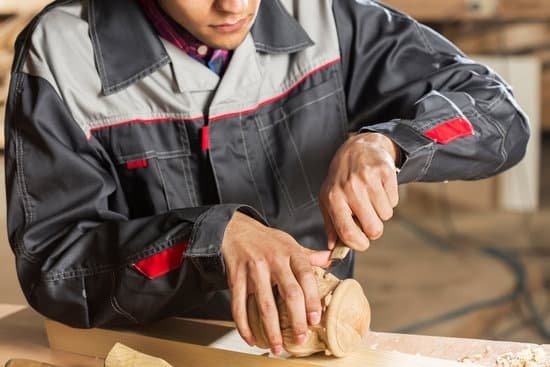Chisels woodworking is a fundamental aspect of woodworking, playing a crucial role in shaping and refining wood into intricate designs and structures. Chisels are versatile tools that come in various shapes and sizes, each serving a specific purpose in the woodworking process. From carving to detailing, chisels are essential for achieving precision and finesse in woodworking projects.
There are different types of chisels used in woodworking, such as bench, mortise, paring, and carving chisels. Each type has its own unique characteristics and applications, making them suitable for specific tasks within woodworking. Understanding the differences between these types of chisels is essential for selecting the right tool for the job and ensuring successful outcomes in your woodworking projects.
When choosing the right chisel for your woodworking project, it is important to consider factors such as size, material, and quality. Selecting the appropriate chisel based on these factors can impact the efficiency and results of your work. Additionally, properly maintaining and sharpening your chisels is key to ensuring their longevity and performance over time. By following proper maintenance techniques, you can enhance the functionality of your chisels and elevate your woodworking skills to new levels.
Types of Chisels
When it comes to woodworking, chisels are essential tools that come in various types to serve different purposes. Understanding the different types of chisels available can help woodworkers select the right tool for their specific projects. Here is a detailed overview of the most common types of chisels used in woodworking:
- Bench Chisels: Bench chisels are versatile tools that are commonly used for general woodworking tasks such as shaping, carving, and creating joinery. They typically have beveled edges that allow for precision cutting and cleaning up corners.
- Mortise Chisels: Mortise chisels are designed specifically for creating mortises, which are rectangular slots cut into wood to fit tenons for joinery. These chisels are thicker and stronger than bench chisels to withstand the force required for chopping out waste material.
- Paring Chisels: Paring chisels have long, thin blades that are ideal for delicate tasks such as trimming, smoothing surfaces, and fitting joints. These chisels excel at removing small amounts of wood with precision and control.
- Carving Chisels: Carving chisels come in a variety of shapes and sizes to accommodate different carving techniques. From gouges to V-parting tools, carving chisels allow woodworkers to create intricate designs and details in their projects.
Each type of chisel plays a unique role in the woodworking process, making it important for craftsmen to have a diverse collection of chisels in their arsenal. Whether you’re working on fine detailing or heavy-duty chopping, having the right type of chisel can make all the difference in achieving your desired results.
Whether you’re a beginner or an experienced woodworker, understanding the differences between bench, mortise, paring, and carving chisels can help you choose the appropriate tool for your project. Consider the task at hand, the type of wood you’re working with, and your skill level when selecting a chisel.
Investing in high-quality chisels made from durable materials will also ensure that your tools last longer and perform better over time. Remember to keep your chisels sharp and well-maintained for optimal performance in all your woodworking endeavors.
Choosing the Right Chisel
When it comes to chisels woodworking, choosing the right tool for the job is crucial for achieving precision and efficiency in your projects. There are several factors to consider when selecting chisels that will best suit your woodworking needs. Here are some key considerations to keep in mind:
- Size: The size of the chisel blade plays a significant role in determining its versatility and usability. Larger chisels are ideal for heavy-duty tasks like mortising, while smaller chisels excel at finer detail work and delicate tasks.
- Material: Chisels can be made from various materials, including high-carbon steel, chromium-vanadium alloy, or even tungsten carbide. The material of the chisel affects its durability, sharpness retention, and overall performance.
- Quality: Investing in high-quality chisels can make a noticeable difference in your woodworking experience. Quality chisels are often well-balanced, have sharp edges that hold up well over time, and are less prone to damage or wear.
Consider these factors when shopping for chisels to ensure that you have the right tools for all your woodworking projects. Whether you are a beginner or experienced woodworker, having a selection of quality chisels in varying sizes and materials will enable you to tackle a wide range of tasks with precision and ease.
In addition to size, material, and quality considerations, it’s also important to think about the specific type of chisel that will best suit the task at hand. From bench chisels for general woodworking to paring chisels for fine detail work, each type has its own unique features that make it suitable for different applications.
Take the time to familiarize yourself with the various types of chisels available and their specific uses to build a well-rounded collection that meets all your woodworking needs.
With the right set of chisels chosen carefully based on size, material, quality, and type, you’ll be well-equipped to take on any woodworking project with confidence. Remember that investing in good quality tools upfront can save you time and frustration down the line by ensuring consistent performance and longevity from your chisels. Happy woodworking.
Proper Maintenance
When it comes to sharpening chisels, there are different methods that woodworkers can use. One common technique is using sharpening stones or whetstones. These abrasive tools help remove any nicks or dullness from the chisel blades, restoring their sharp edge. Additionally, some woodworkers may opt for specialized jigs or honing guides to ensure consistent angles while sharpening.
In addition to sharpening, proper storage of chisels is also important for maintenance. Keeping chisels in a dry environment and protecting them from moisture helps prevent rust and corrosion. Some woodworkers invest in protective cases or tool rolls to keep their chisels organized and well-preserved when not in use.
| Chisel Care Tips | Sharpening Methods |
|---|---|
| Keep chisels dry and protected from moisture | Using sharpening stones or whetstones |
| Store chisels in protective cases or tool rolls | Utilizing specialized jigs or honing guides |
Essential Techniques
Woodworking is a craft that requires precision and attention to detail, and choosing the right tools is crucial for achieving desired results. One of the fundamental tools in woodworking is chisels. Chisels are versatile hand tools used for cutting, shaping, carving, and detailing wood.
They come in various shapes, sizes, and types, each serving a specific purpose in woodworking projects. When it comes to chisels woodworking, understanding essential techniques on how to properly use them is key to executing tasks effectively.
One of the basic techniques in using chisels for woodworking is ensuring that the chisel is sharp before starting any task. A dull chisel can lead to splintering or tearing of wood fibers instead of cleanly cutting through them. Sharpening a chisel involves honing its edge using sharpening stones or systems to maintain a precise angle.
Additionally, knowing how to properly hold and position the chisel while working on different tasks is essential for safety and accuracy. Whether it’s carving intricate designs or shaping edges, having a firm grip and applying controlled pressure can make all the difference in achieving desired outcomes.
When it comes to carving with chisels woodworking, understanding grain direction plays a significant role in determining the success of your project. Carving against the grain can result in tear-out and rough surfaces, while carving with the grain allows for smooth cuts and clean finishes.
Moreover, learning different cuts and techniques such as paring cuts for removing thin shavings or chopping cuts for removing larger sections can help you achieve specific shapes and textures when working with chisels. Mastering these essential techniques not only enhances your woodworking skills but also opens up endless possibilities for creating unique and intricate pieces using this versatile tool.
| Chisel Types | Description |
|---|---|
| Bench Chisels | Used for general woodworking tasks such as chopping mortises and shaping joinery. |
| Mortise Chisels | Designed specifically for cutting mortises – square holes made in wood joinery. |
| Paring Chisels | Thin blades ideal for delicate trimming work like fitting joints or flush-cutting dowel ends. |
Safety Precautions
When it comes to woodworking, safety should always be a top priority. This is especially true when working with chisels for various tasks like carving, shaping, and detailing. Chisels are sharp tools that can easily cause injuries if not handled properly, making it crucial to follow safety protocols.
One of the most important safety precautions when using chisels is wearing the appropriate protective gear. This includes gloves to protect your hands from cuts, goggles to shield your eyes from wood chips or splinters, and ear protection if you are working with power tools.
In addition to wearing protective gear, it is essential to handle chisels with care to prevent accidents. Always make sure that your work area is clutter-free and well-lit before using chisels. Keep your chisels sharp and in good condition to avoid any mishaps while cutting through wood. When using a mallet for extra force, ensure that the chisel is securely positioned on the wood surface and strike it carefully to avoid any slippage.
Another vital safety precaution when working with chisels woodworking is to always cut away from yourself. This means positioning the blade of the chisel away from your body and hands while applying pressure. By following this simple rule, you minimize the risk of accidentally cutting yourself during a woodworking project. Remembering these safety measures will not only protect you from potential harm but also allow you to focus on creating beautiful and intricate woodworking pieces with confidence.
Popular Woodworking Projects
Woodworking projects that involve chisels can range from creating intricate designs to crafting dovetail joints and wood sculptures. These projects not only showcase the craftsmanship and skill of the woodworker but also provide a sense of accomplishment and satisfaction upon completion. Whether you are a beginner looking to hone your skills or an experienced woodworker seeking new challenges, incorporating chisels into your projects can add a unique touch to your creations.
Intricate Designs
One of the most common uses of chisels in woodworking projects is for creating intricate designs on surfaces such as furniture, cabinets, and decorative pieces. By carefully carving out patterns, motifs, or embellishments using different types of chisels, woodworkers can achieve stunning visual effects that enhance the overall aesthetics of their work. From delicate floral patterns to geometric shapes, chisels offer precision and control for bringing intricate designs to life on wood.
Dovetail Joints
Another popular woodworking technique that incorporates chisels is the creation of dovetail joints. These interlocking joints are widely used in cabinetry and furniture making for their strength and durability. By using bench or paring chisels to shape the notches and tails of dovetail joints, woodworkers can achieve tight-fitting connections that are both functional and visually appealing. Mastering the art of dovetail joints with chisels requires patience and practice but can elevate the quality of your woodworking projects significantly.
Wood Sculptures
For those interested in sculptural woodworking, chisels are indispensable tools for shaping and detailing wood into three-dimensional forms. Sculptors use carving chisels to remove material strategically, creating curves, textures, and contours that bring sculptures to life.
Whether you are sculpting figurative pieces or abstract art, the versatility of chisels allows for a wide range of creative expression in woodworking. With proper technique and skillful use of chisels, woodworkers can transform ordinary pieces of wood into stunning works of art that capture attention and admiration.
Chisels Woodworking Community
Woodworking is not just a hobby or a craft; for many, it’s a way of life. The art of chisels woodworking goes beyond simply creating functional pieces – it is about the passion, creativity, and dedication that woodworkers bring to each project.
For those who want to delve deeper into the world of chisels woodworking, connecting with like-minded enthusiasts can be incredibly rewarding. By joining woodworking communities, participating in workshops, and learning from experienced craftsmen, individuals can expand their knowledge, hone their skills, and find inspiration for new projects.
Being part of a chisels woodworking community provides invaluable opportunities for growth and development. Whether you are a beginner looking to learn the basics or an experienced woodworker seeking to refine your techniques, surrounding yourself with fellow enthusiasts can offer valuable insights and perspectives. Workshops and classes offer hands-on experience and guidance from skilled professionals, helping individuals master new skills and gain confidence in their abilities when working with chisels woodworking.
Furthermore, connecting with other woodworking enthusiasts through online forums or local meetups allows for collaboration, idea-sharing, and mentorship within the chisels woodworking community. By engaging with like-minded individuals who share a passion for the craft, woodworkers can forge lasting relationships, exchange tips and tricks, and support each other on their woodworking journey.
Whether you are seeking advice on a challenging project or simply want to connect with others who appreciate the beauty of working with chisels in woodworking, being part of a supportive community can enhance your overall experience in this timeless art form.
Frequently Asked Questions
What Are Chisels Used for Woodworking?
Chisels are commonly used in woodworking for carving, cutting, and shaping wood. They can be used to create joints, carve designs, or even help with removing excess wood to achieve a precise shape or size.
What Is the Best Chisel Set for Woodworking?
The best chisel set for woodworking largely depends on personal preference and the specific project at hand. Factors such as the type of wood being worked on, the desired finish, and budget all play a role in determining the best set for an individual woodworker.
Why Are Japanese Chisels So Good?
Japanese chisels are highly regarded by woodworkers for several reasons. Their blades are typically made of high-quality steel that allows for sharper and more durable edges.
Additionally, Japanese chisels often have hollow backs which make them easier to sharpen and maneuver when working on intricate wood projects. Their ergonomic design also sets them apart from other types of chisels, making them comfortable to use for extended periods of time without causing strain on hands and wrists.

Hi everyone! I’m a woodworker and blogger, and this is my woodworking blog. In my blog, I share tips and tricks for woodworkers of all skill levels, as well as project ideas that you can try yourself.





